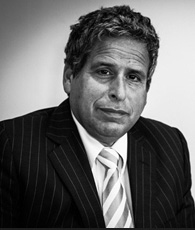Icy Sovereignty
This week, Russian Prime Minister Vladimir Putin plays host to the warmly entitled conference “The Arctic: Territory of Dialogue,” which will include participation of representatives from the United States, Canada, Norway, Denmark, Finland, Iceland and Sweden, along with scores of other experts and scientists, all together in a meeting which Russia says has been convened in order to “find consensus” over territorial rights and arbitrate disputes. To help pump up interest in the conference, today Natural Resources Minister Yuri Trutnev boldly announced, “Our sector in the Arctic is estimated to contain up to 100 billions tons of resources,” while foreign bids to develop the Trebs and Titov oil and gas fields (not part of the disputed territories of course) are being examined by the Natural Resources Ministry.
Of course, the part of that statement under dispute is what exactly Trutnev means by “our sector,” as both Canada and Denmark are filing competing claims with Russia before the United Nations with regard to the sovereign rights of the underwater Lomonosov Ridge. Russia is the one country that seems to be taking the Arctic land grab more seriously than anyone. There are plans to invest 2 billion rubles in scientific exploration to come up evidence on how far the continental shelf extends, while new stations are being established and military presence asserted. Perhaps just for fun, Russia sent two fighter jets to buzz a U.S. Navy frigate in Arctic waters, which was on its way back from a visit to Russia where they took part in a “friendly” joint celebration of WWII cooperation.
However the ongoing confrontation between Russia and its Arctic neighbors over territorial claims has changed somewhat in tone in recent months, as high level diplomacy and targeted dealmaking have become more visible than previous submarines and bomber flights – for now.
Recent moves by the Russian authorities point to an attempt to assume a leadership role in the dispute settlement process – which is an advantageous position for them to hold and the benefit of their own disruptive actions over the past number of years. On Sept. 15, Russia and Norway signed a border agreement in the Barents and Artic Seas, bringing a 40-year-long dispute to a sudden and unexpected conclusion. Not only is Russia welcoming Statoil’s deepwater extraction expertise and technological capital, the deal also serves to set an positive example in contrast to its recent “agreement” with Canada to allow the United Nations to rule on Lomonosov.
The Russia financial markets guru Chris Weafer recently distributed a research note indicating that Russia’s Norway deal was made to get a leg up in the UN process: “Canada and the US oppose the [Russian] claim but Norway may now be more supportive,” Weafer writes. “On ageo-political level, this deal is yet another example of Russiaresolving long-standing disputes as it pursues a new and softer foreignpolicy.“
By the looks of it, the disaggregation of Arctic partnerships seems well underway, with both Sergei Lavrov and Norwegian Foreign Minister Jonas Gahr Støre having published a co-signed opinion article in Canada’s Globe and Mail recommending “patient dialogue,” “cooperation,” and urging the feisty Canadians to “overcome the zero-sum logic of competition and replace it with a process focused on finding a win-win solution.” The article would be thoroughly unobjectionable had it been written before all the aggressive flag planting and hostile military gestures which have cornered Canada into working out compromises with the very parties that have created the problems.
My colleague Vladimir Gladyshev, a highly accomplished Russian lawyer now affiliated with my firm Amsterdam & Peroff, has published a number of analytical articles on the Russian arctic strategy, some of which have been translated here. Gladyshev has commented that dating back to the early Cold War years and all the changes since, the competing players for Arctic territories have been left with “incompatible bits of legal regimes, policy positions and conflictinginterests – some left over from the previous decades, some brand new,” a situation which makes it possible for symbolic gestures to have a strong impact on the negotiations process and arbitrariness of the application of UNCLOS rules.
The Russian strategy in the Arctic represents a familiar process of disaggregation and co-optation, and we are likely to see much more of the on-again, off-again soft power diplomacy measured by hard power bullying. The comforting language used by Lavrov in his article will likely be the order of the day at the conference, while the undertone and actions will often signal much different intentions. Canadian Foreign Minister Lawrence Cannon, who is currently visiting Moscow for the conference to represent his government’s long-standing claim to the Lomonosov Ridge, will find the hospitality polite but chilly.











